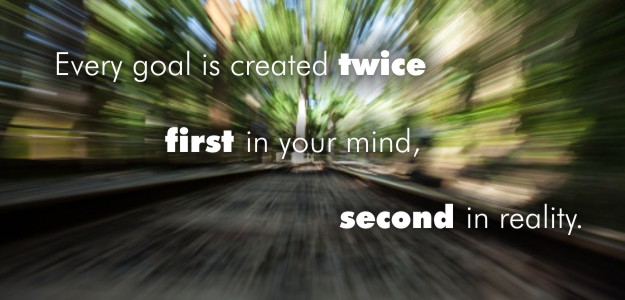It’s that time of year when we get to hear the campaign speeches from our candidates for student leadership positions. Beyond their ability to give a good speech, they each share their hopes and dreams for next year. They lay out their plan to make it “the best year ever.”
They are sharing their vision for the future.

A distinguished philosopher once wrote that the greatest force for the advancement of the human species is “a great hope held in common.” He went on to say that “everybody knows, without troubling to weigh the reason or importance of a fact seemingly so commonplace, that nothing is more impossible than to inhibit the growth of an idea” (Teilhard de Chardin).
The right vision for the future of an organization is such an idea. It moves people to action, and because of their action, the organization evolves and makes progress. Since an organization must move forward, or, like a bicycle, it will fall over, the role of vision in driving the organization forward is indispensable. The vision’s power lies in its ability to grab the attention of those both inside and outside the organization and to focus that attention on a common dream – a sense of direction that both makes sense and provides direction.
Selecting and articulating the right vision, this powerful idea, is the toughest task and the truest test of great leadership. When it is achieved, the organization is already well on its way to the realization of the dream.
Burt Nanus, in his book, Visionary Leadership, describes four powerful forces that are unleashed when the right vision is offered and owned by the organization:
The right vision attracts commitment and energizes people.
People seem to need and want something they can commit to, a significant challenge worthy of their best efforts. People are willing, even eager, to commit voluntarily and completely to something truly worthwhile, something that will make life better for others, or that represents a significant improvement for their community or county, or that enables their own organization to grow and progress.
The right vision creates meaning in people’s lives.
People need to find meaning in their work. There is a world of difference in terms of pride, self-image, dedication, and job performance between one worker who, when asked what he does, replies simply “I’m a bricklayer” and another who may have the identical job but answers the same question with “I’m building a home for a family in my community.”
The right vision establishes a standard of excellence.
People want to do a good job, to have a feeling that they are effectively advancing the organization’s purposes and are being recognized for their contributions. The vision calls out to everyone in the organization: “This is what we see as our distinctive competence, this is what we stand for, and there is where we’re going.”
The standards you set in your own vision should not be cut from whole cloth, of course. You should aim to ensure that they match the expectations of those within the organization as well as those the organization serves. If yours is a healthcare organization, for instance, then it only pays to take into account things like the latest healthcare marketing trends. Be aware of the zeitgeist and how to seize it for your own benefit.
The right vision bridges the present and future.
It is easy to get caught up in the problems and details of everyday work. The right vision transcends the status quo. It provides the all-important link between what is now taking place and what the organization aspires to build in the future. In doing so, it highlights those present activities that need strengthening if the vision is to be realized.
Want more help and guidance in developing and crafting a compelling vision? Check out Visionary Leadership for yourself.
Your comments are welcome: What is your compelling vision? How does one go about conceiving a vision? How did you get yours?
Share this Post
